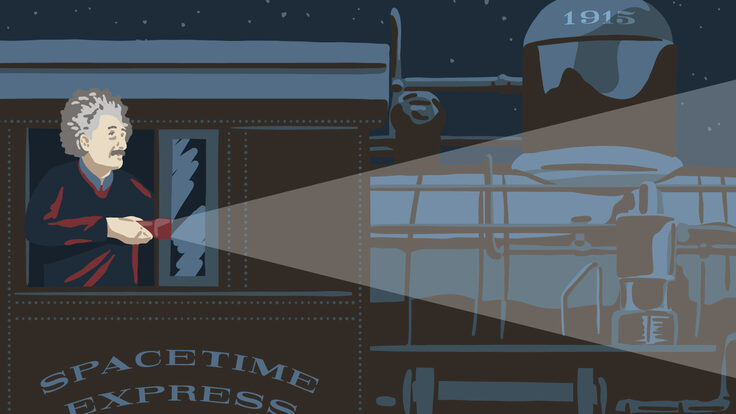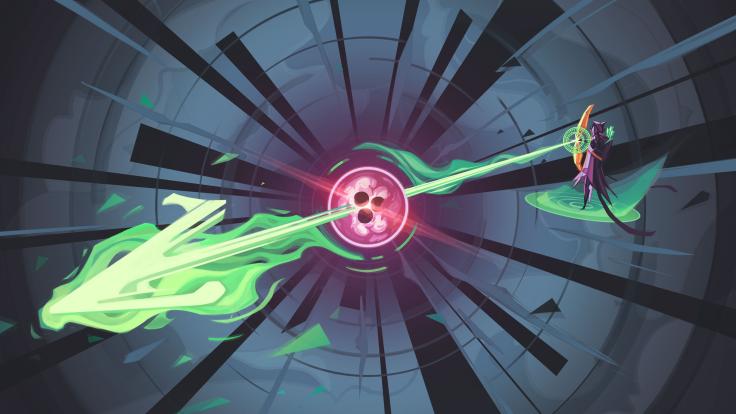If you study high-energy particle physics, the importance and excitement of neutrinos is obvious. But how do you convey that to an auditorium of students, a member of Congress, or your neighbor?

Michael Turner
If you're Michael Turner, a University of Chicago astrophysicist, you borrow a plot line from the classic Christmas movie, It's a Wonderful Life. "What if neutrinos had never existed?" Turner asked in a recent public outreach lecture. Then he showed the audience a world without the subatomic particles, just as the movie showed life minus the main character George Bailey.
"No neutrinos," Turner said. "That means no atoms, no Earth, and no us."
Connecting science to everyday experiences in jargon free terms is key to science outreach, something Turner excels at doing. He shared his insights and tips from more than a decade worth of talks with scientists at Fermilab's annual Users' Meeting this month. The meeting featured a special Outreach Workshop with talks to help scientists adjust to a changing climate that requires every scientist be able to explain the value of research in language a banker with no science background would understand.
In the past, science funding was virtually assured, but today HEP physicists must vie for government support with a plethora of other scientific fields amidst an economic downturn and mounting deficit.
"There is no such thing as entitlement to science funding in this society," said Herman White, a Fermilab scientist, who often meets with Washington policy makers. "You have to make an argument, and it has to be a good argument."
The keys to generating interest in particle physics are: telling the story of the wonder and the cutting-edge nature of the research; building a broader base of support outside of the academic community; and explaining how basic-research funding has paid off for society with advances in technology, an educated workforce, and industrial applications.
"What we do is intrinsically interesting and important," Turner said. "You have to work hard to make it boring."
A recent nationwide series of lectures on the science behind the movie Angels & Demons showed that people hunger for science knowledge. More than 4600 people so far have attended 61 lectures across the United States as well as many more at lectures overseas.
Manfred Paulini, a physicist from Carnegie Mellon University who conducts research at Fermilab, had a full house for his lecture even though it was competing against the Pittsburg Penguins' playoff hockey game and a lecture by a visiting computer scientist. A YouTube video of his talk has garnered 16,000 hits, the second highest number of hits for a Carnegie Mellon video behind Randy Pausch's "The Last Lecture".
Paulini told attendees of the Users' Meeting what he learned about the preferences of general public audiences.
"If you think what you're saying is too simple or too dumbed down, it is probably still too complicated," he said. "Describe a scientific concept by relating it to an everyday idea," he suggested. "Then you can reference it later in your talk, and your audience will understand what you mean."
Don Lincoln, a Fermilab scientist, added his reflections on writing two popular science books about particle physics. "Don't try to do a big overview," of a broad scientific subject, he said. "Focus on a single topic. People relate to that."
To get a good list of dos and don'ts for outreach, watch a video of Turner's talk. He outlined the essentials of knowing your audience, using PowerPoint judiciously, using humor, exuding enthusiasm, and considering panel discussions and on-stage conversations as alternatives to the standard lecture format. Above all, keep it simple.
"We don't have to give lectures," Turner said. "We don't have to use jargon. We can leave some things out. Leave them wanting more."
Watch videos of the three Outreach Workshop panels here.
by Rachel Carr








